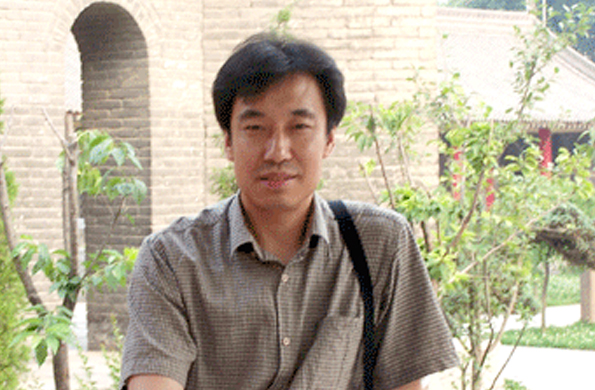Where is aesthetics of everyday life in China heading?
 Since the beginning of the 21st century, the multidirectional trajectory in which Chinese aesthetics has developed has become obvious. Apart from practical aesthetics and many years of post-practical aesthetics, the aesthetics of practical ontology, ecological aesthetics, new practical aesthetics and body aesthetics have emerged. In particular, an aesthetics of everyday life has appeared. According to incomplete statistics, there are altogether 281 papers, 81 works, and more than 40 master’s and doctoral theses that explore the topic of the aesthetics of everyday life, in addition to more than ten international and domestic symposiums from the beginning of the new century to the end of 2018. Moreover, the area has drawn intense attention beyond academia. Many a sector such as home furnishing, tea drinking, express delivery, bookstores, sightseeing and even real estate all advertise using the aesthetics of everyday life. Reality and aesthetics are so close—this is very interesting.
Since the beginning of the 21st century, the multidirectional trajectory in which Chinese aesthetics has developed has become obvious. Apart from practical aesthetics and many years of post-practical aesthetics, the aesthetics of practical ontology, ecological aesthetics, new practical aesthetics and body aesthetics have emerged. In particular, an aesthetics of everyday life has appeared. According to incomplete statistics, there are altogether 281 papers, 81 works, and more than 40 master’s and doctoral theses that explore the topic of the aesthetics of everyday life, in addition to more than ten international and domestic symposiums from the beginning of the new century to the end of 2018. Moreover, the area has drawn intense attention beyond academia. Many a sector such as home furnishing, tea drinking, express delivery, bookstores, sightseeing and even real estate all advertise using the aesthetics of everyday life. Reality and aesthetics are so close—this is very interesting. The idea of the aesthetics of everyday life was put forward in 1987. It was proposed that aesthetics should be applicable and go beyond pure theory.
However, how could everyday life practices integrate aesthetics? Many areas of today’s mundane life reflect people’s needs in modern industrial society, which mainly includes two aspects: One is economic demand; the other is the need for happiness. To live and live well—people pursue both physical and mental feelings of satisfaction, mainly spiritual value. Before the 21st century, the study of aesthetics lacked sufficient attention to modern economic reform. Instead, it reflected more on the past in terms of value rationality. Subjective aesthetics is one such example. Although some branches of the study began to notice economic changes, they mostly faced the impact of the modern economy on spiritual values in a negative way.
Since the beginning of the 21st century, people’s need for food and clothing has been basically guaranteed. They began to pay attention to consumption and pursue improvements in their quality of life. Elements of aesthetics are thus naturally incorporated into daily life and linked with the production of goods and marketing. This provided the soil for the growth of the aesthetics of everyday life, along with the conditions for harmony between the discipline’s theory and practice.
Though the “marriage” of theory and practice is heartening, not all marriages are perfectly satisfactory. For instance, in some real-estate sales offices, works of calligraphy and painting are hung, and several sculptures are placed outside the room—and thus the office is billed as the pavilion of the aesthetics of everyday life.
The problems mainly lie on how today’s aesthetics of everyday life are defined—they needs to confront where it has come from and make clear where it is going.
In terms of modernity, Marx considered it to be beyond reproach to develop science and technology in order to improve productive forces, but at the same time this inevitably leads to fetishism, blasphemy, reification and other problems. These problems should not be solved at the expense of economic development. Compared with other Western theories of modernity, Marx’s views are more consistent with the life context of contemporary China, which is more helpful to grasp the problems of life in China.
Since the 1980s, in the process of developing science and technology and building a modernized society in a comprehensive way, some of the problems pointed out by Marx have gradually come to light in China. However, the aesthetics of everyday life that emerged in the same period did not proceed from these practical problems in life, but applied the ready-made theories in specific life, and many of them were not properly used. For example, some aesthetics say “fat people cannot wear bell-bottom pants,” “females should be plump” and so on. Times have changed, and economic development is calling for new conceptual forms. Therefore, the Third Plenary Session of the Eleventh Central Committee of the Communist Party of China (CPC) stressed “a way of life that adapts to the development of modern productive forces” and the “abandonment of those backward, ignorant and decadent things.”
After the 21st century, the aesthetics of everyday life in China has fully absorbed the external resources, especially the Western traditional resources, such as Heidegger’s emphasis on existence, Dewey’s trust in science and technology, and Baudrillard’s analysis of pseudo-culture. These foreign theories can help us to see our own lives to a certain extent. But the problem is, China has its own special reality and historical context. The appearance of a contemporary aesthetics of everyday life is the product of the accumulation of theories and the demand of China’s modern economic development. It conveys people’s longing for a better life. Some problems in the process of its own theory building are also an important part of the aesthetics of everyday life’s own exploration and development. For any theory, only by rooting itself in the reality of the times and improving its discourse system based on real problems can it be translated into the power of practice.
Zhang Baogui is from the Department of Chinese Language and Literature at Fudan University.
edited by BAI LE
